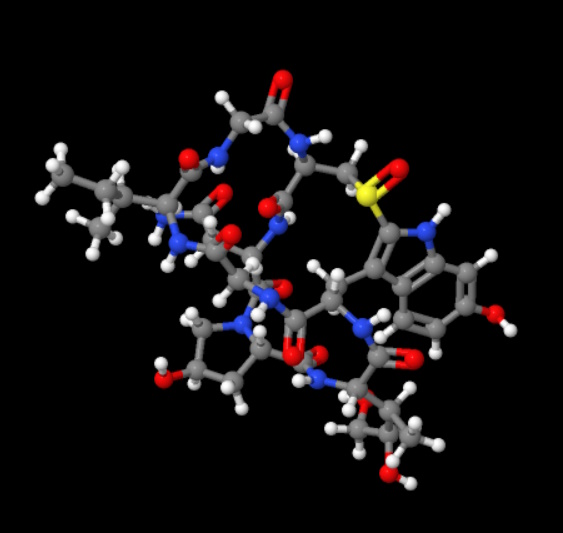What makes the death cap fungus (toadstool or mushroom), Amanita phalloides, so poisonous?
Well, the primary toxin present in this fungus is alpha-amanitin. This chemical goes by the following systematic name, although you’re unlikely to see it spelled out in full in the news about the ongoing murder trial that’s in the Australian news at the moment:
2-[(1R,4S,8R,10S,13S,16S,34S)-34-[(2S)-2-Butanyl]-13-[(2R,3R)-3,4-dihydroxy-2-butanyl]-8,22-dihydroxy-27-oxido-2,5,11,14,30,33,36,39-octaoxo-27-thia-3,6,12,15,25,29,32,35,38-nonaazapentacyclo[14.12.11 .06,10.018,26.019,24]nonatriaconta-18(26),19,21,23-tetraen-4-yl]acetamide.

The same toxin is also found in the Destroying Angel fungus, Amanita virosa.
The chemical is essentially a ring of eight amino acids. This structure fits easily into the active site of two enzymes, RNA polymerase II and III and blocks their activity in the body leading to liver and kidney failure. When ingested the toxin ultimately binds to the enzyme and kills liver cells, but symptoms often don’t appear for at least ten hours, sometimes a day. This period of time is way past the point at which stomach pumping to remove the fungus would help.
Diarrhoea and stomach cramps are the first symptoms. These subside after a day or so and gives the poisoned a false remission. By day four or five, the toxin starts to have severe effects on the liver and kidneys, leading to total system failure in both, coma and death ensue within a week.